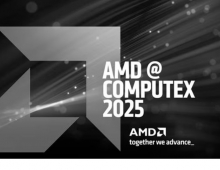
AMD Expected to Respond to NVIDIA's New RTX Real-Time Ray Tracing Technology
Nvidia made headlines during SIGGRAPH with the announcement of the new groundbreaking RTX real-time ray tracing platform featuring their Turing GPU architecture, but rival AMD is expected to respond later this year.
To showcase the new RTX architecture's capabilities, NVIDIA created this cinematic ray-traced scene running in real time in Unreal Engine 4. It is powered by a single NVIDIA Quadro RTX 6000 and shows off cinematic-quality rendering in real time.
Much has been written aboutrRay tracing, a technology which has significant impact on various areas of photorealistic image production. Movie studios have been using ray tracing for years, but with a frame rate of just 2 frames per day. This will potentially accelerate and increase that productivity. And games have about the same development and production times as movies.
Speaking to Animation World Network, computer graphics industry analyst Dr. Jon Peddie, president of Jon Peddie Research, said "NVIDIA's proprietary RTX API exposes the special hardware they put into the new Turing chip, which will connect using the OptiX software. It's pretty damn exciting and interesting. It's a beautiful merger of processor technology with AI and the new GPU-based ray tracing software. Not only that, but they managed to pull it off 4-5 years earlier than I or anyone else thought they could."
Microsoft has also engaged with ray tracing though the DirectX Ray Tracing (DXR), along with Chaos Group [Project Lavina], Pixar USD [Universal Scene Description] and others.
As far as how the new NVIDIA technology impacts its competitors, Peddie adds, "AMD will react. They already have an AI accelerator in the works which they announced at Computex. It's expected out later this year. AMD has their own ray tracing software too, so you can expect to see them making real-time ray tracing announcements in Q4. They will likely use Microsoft's DXR because in general, AMD prefers to go open source. Intel, which is expected to introduce a discrete GPU in 2020, may pull that in and make a surprise announcement in 2019. But even if they do, it won't have AI acceleration." With regards to Intel, Peddie went on to conclude, "They are in an awkward position of being a bit behind the curve with their product entry, which I would guess was part of NVIDIA's motivation in this surprising announcement. Intel will probably be able to offer real-time ray tracing by 2021-2022 at the latest."





















Since developer interest in feature adoption is typically linked to feature availability, it makes sense to argue for a simultaneous top-to-bottom introduction rather than a staggered rollout. m is likely to be a very important node for DXR support, because the die shrink it enables will allow Nvidia (and theoretically AMD) to dedicate more hardware to ray tracing capabilities in the same amount of physical space. At the same time, however, Nvidia has taken a real risk with its approach to RTX to-date.